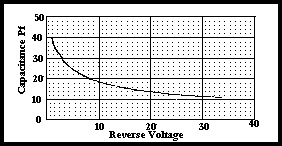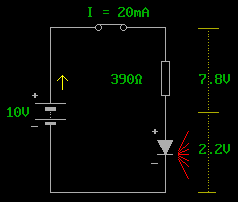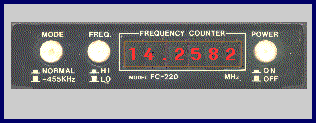
This diode is also referred to as a 'varactor diode' or more commonly as a 'varicap diode'. It is used in the reverse bias mode and uses the width of the depletion layer to vary the capacitance. All diodes exhibit this effect to some extent but the doping of the semiconductor used can have a marked effect on the capacitance range available. The depletion layer can be likened to a parallel-plate capacitor - by widening the distance between the plates the capacitance drops and vice versa. As the reverse bi increases so the depletion layer widens and the capacitance decreases. This is depicted in Fig 3.6 for a type BB110 diode.

Fig 3.6. Variation in capacitance of a varactor diode
There are many different devices available with varying specifications and in total cover the range from 2pF up to 600pF. Their use varies from tuning circuits to FM modulators and frequency multipliers.
This diode consists of a PN junction formed commonly from gallium arsenide or gallium phosphide. When electrons recombine with holes across the depletion layer, particles of light, called photons, are released. The colour of this light depends on the doping of the semiconductor mate rial. Commonly, they are available in red, green, yellow or infra-red, but recently blue and white LEDs have also become available. They are a much more efficient and longer lasting source of light than incandescent bulbs. At a forward current of about 12mA they produce a useful amount of light, with a forward voltage drop of about 1.8V. They are usually connected with a series resistor to limit the current flow through the diode. LEDs are commonly used as front panel indicators, and some, specially doped to produce infra-red, are used to transmit information, eg TV remote control.

This photograph depicts a small variety of just some of the commonly available LED's.

The above animation shows a typical circuit for lighting an LED.
LED's are very sensitive to too much current flowing through them, the 390 Ohm resistor limits this to a safe value.

Photo 3.2 The display of this frequency counter is formed from LED's arranged to form numerical digits